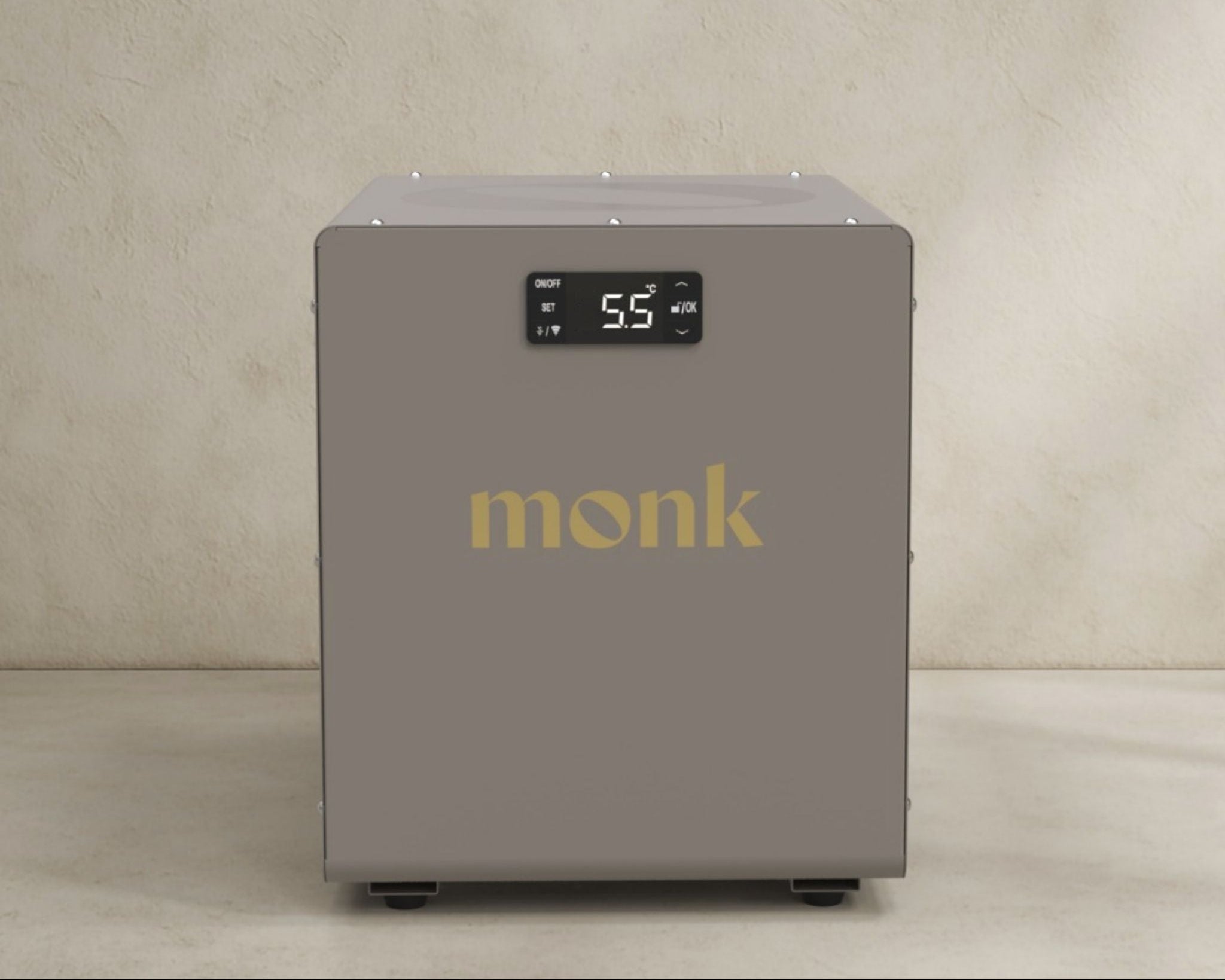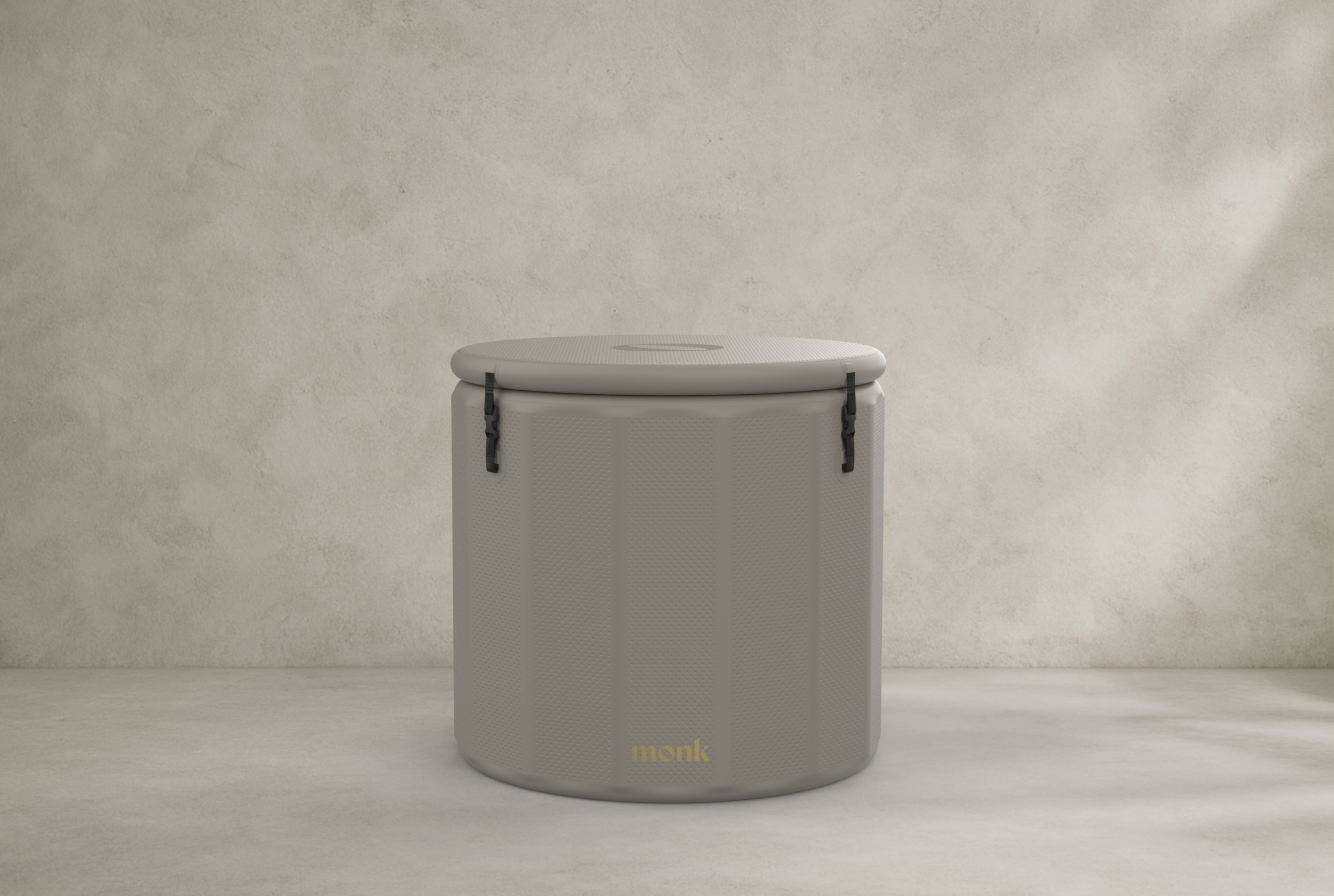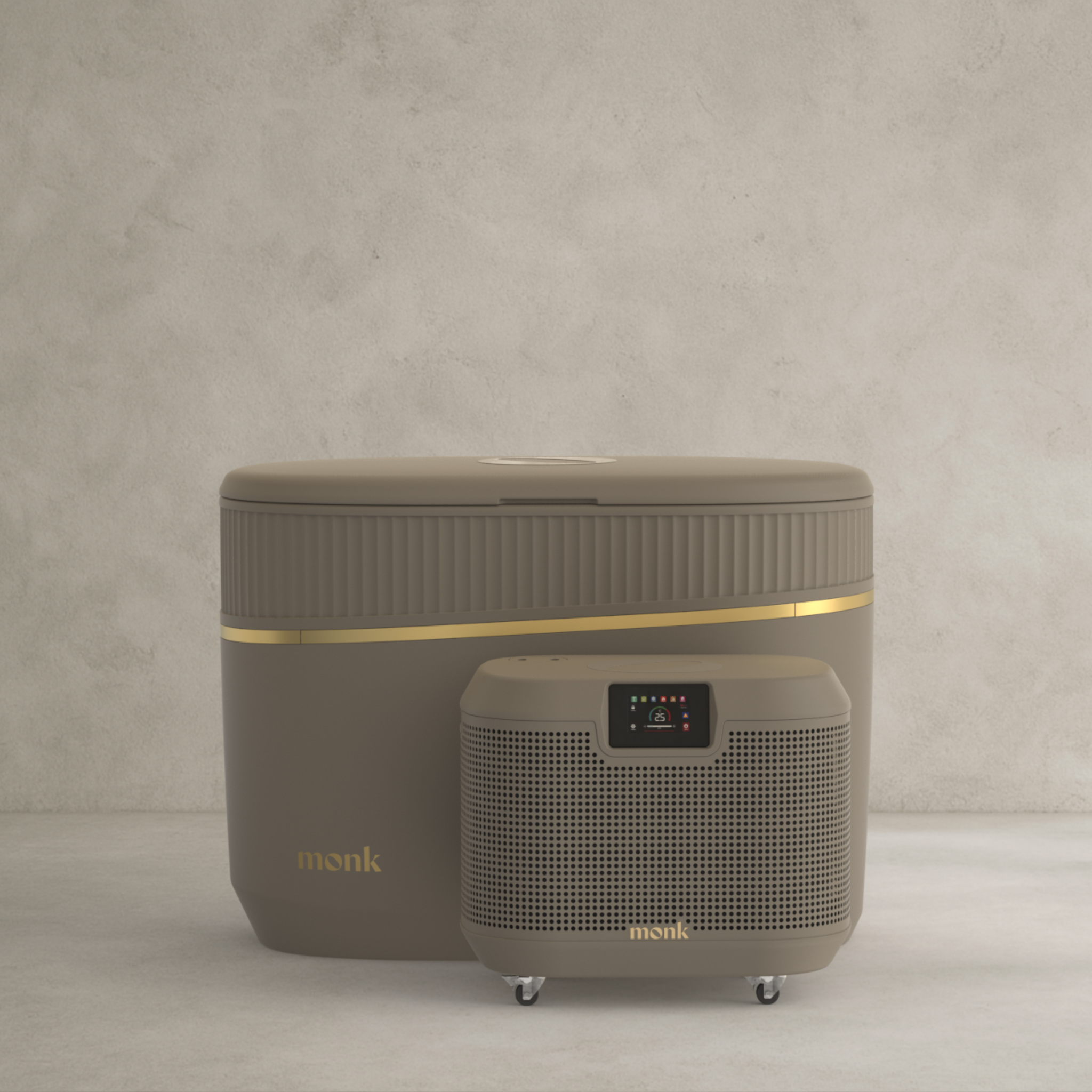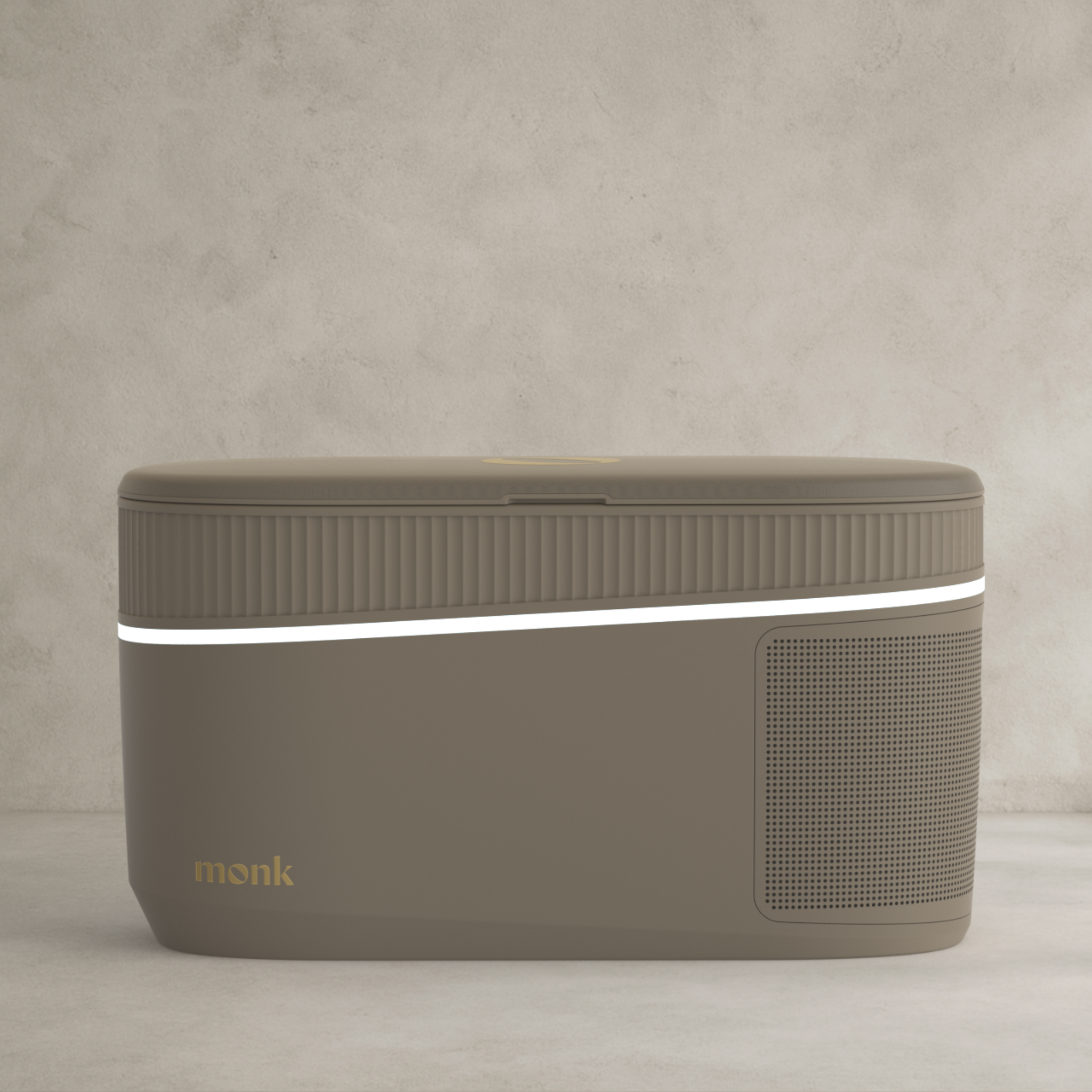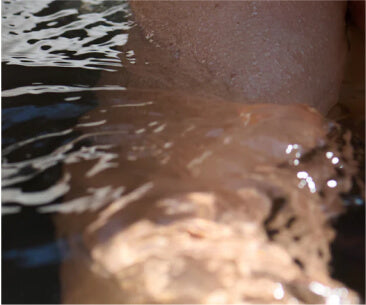The sweaty science of contrast therapy
Cast your mind back to the BC era. Think Julius Caesar, Cicero, and white togas. Contrast therapy was emerging as the original wellness ritual – alternating between steamy saunas and icy plunges.
Fast forward to now: modern science is confirming what ancient cultures knew all along. Contrast therapy isn’t just for sore muscles – it boosts brain health, builds resilience, and supports long-term vitality.
Why combine sauna and cold exposure?
Despite its popularity, contrast therapy hasn’t received any specific studies directly comparing sauna alone with sauna plus cold therapy yet, but existing research suggests that combining these therapies adds the science-backed benefits of the cold that you know and love (neuroprotection, immunity, muscle recovery, and depression and anxiety, to name a few), into one ritual.
We know the benefits of the cold. So what does a sauna bring to the table? Let’s take a look…
Our top three benefits of sauna use
1. Cardiovascular health: boost circulation and heart function
The studies into the cardiovascular benefits of sauna are incredibly compelling. Notably, the KIHD Risk Factor Study of over 2,300 middle-aged men in Finland has revealed significant, dose-dependent benefits from regular sauna use. Men who used the sauna 2-3 times per week were 27% less likely to die from cardiovascular causes compared to non-users, and those using the sauna 4-7 times per week saw a 50% reduction in cardiovascular-related deaths. Wild, huh? This shows that it’s dose dependent, meaning the greater the use, the greater the benefits. Additionally, frequent sauna users experienced a 40% lower risk of all-cause premature death, even after accounting for age, activity levels, and lifestyle factors.
Sauna use is essentially mimicking moderate aerobic cardiovascular exercise. We experience the same physiological responses – such as an elevated heart rate (around 120 bpm), increased core body temperature, and sweating. Furthermore, blood pressure and resting heart rate tend to decrease post-sauna.
One cool thing that many people don’t know is that 15 minutes of sauna use after exercise three times per week can improve VO2 max more than exercise alone after eight weeks. Another study showed that one 30-minute sauna session twice a week for three weeks post-workout increased the time that it took for the study participants to run until exhaustion by 32 percent compared to their baseline. So, for cardiovascular health and physical performance, there’s a lot of weight behind sauna use.
2. Neuroprotective effects: support brain health and longevity
Sauna use has shown powerful results in reducing the risk of neurodegenerative diseases. The KIHD study highlighted a dose-dependent reduction in dementia and Alzheimer's risk among frequent sauna users. Men who used the sauna 4-7 times per week had a 66% lower risk of developing dementia and a 65% lower risk of Alzheimer's, compared to those who used the sauna only once a week. This robust data underscores the profound impact of regular sauna use on longevity and overall health.
The effects of sauna on longevity and disease prevention are multi-faceted. Sauna use has been shown to boost the production of brain-derived neurotrophic factor (BDNF), promoting neuron survival and neuroplasticity, thereby supporting brain health.
Just like how ice baths activate cold shock proteins, the sauna activates heat shock proteins (HSP). Together, these proteins enhance cellular resilience and recovery from stressors. More specifically, HSP prevent protein aggregation and plaque formation in the brain.
One study showed that heat treatment on flies increased their lifespan by up to 15%, mostly by acting on these HSPs. Another important mechanism is on FOXO3 proteins. FOX03 is triggered by heat, and regulates cellular ageing, inflammation, and energy metabolism, and therefore is thought to be responsible for many of the health ageing effects of sauna. FOX03 is known as a “master regulator of many different genes,” and when it’s activated, it can increase the expression of several other genes that make your cells more resilient to stressors that cause ageing, such as DNA damage and cancerous cell growth.
In summary, regular sauna use can significantly enhance brain health and longevity by activating protective mechanisms and promoting cellular resilience.
3. Detoxification: improve cellular resilience and recovery
Tough truth: in today’s world, we’re exposed to environmental toxins every day in the foods we eat, water we drink, and air we breathe. Think mercury in certain types of fish and dental amalgam fillings, lead in beauty products, arsenic in agricultural products, cadmium in cigarette smoke and exhaust fumes, BPA from plastic bottles and coffee cup linings, pesticides from foods, and more. These toxins get stored in adipose fat tissue, where they can stay for decades and get slowly released over time. We know, not great.
Fortunately, when your body heats up, it helps to mobilise these toxic substances from fat cells where they can be excreted through your skin via sweat. The average person loses around 0.5 kg of sweat from a single sauna session.
Fun fact: the skin is the largest organ in the human body. It is sometimes called the “third kidney”, since it eliminates about 30% of the body’s waste and toxins (although it’s vital to have well-functioning kidneys and a liver too).
The great news is that studies have shown that sauna-induced sweat can significantly expel heavy metals much more effectively than we can through urine.
In one study, lead was excreted 17-fold more in sweat than in urine. Similarly, other metals showed significantly higher excretion rates in sweat versus urine, such as aluminium 3.75 fold, and cadmium 25-fold.
Heat exposure also creates a mild hyperthermia, which acts as an artificial fever that signals the body to increase the production of disease-fighting white blood cells. As a result, saunas can enhance the detoxifying capacity of skin and boost the immune system. To quote the famous Greek physician, Parmenides: “Give me the power to create fever, and I will cure any disease.”
Does contrast therapy blunt the benefits of cold exposure?
A new study specifically examined the impact on blood pressure, which is a well documented benefit of sauna use. This benefit (akin to the effects of moderate aerobic exercise we spoke about earlier) arises from vasodilation induced by heat exposure. While the vasodilation from heat and vasoconstriction from cold might seem contradictory, the study found that the combination protocol actually improved diastolic blood pressure, and maintaining a healthy diastolic pressure is crucial for preventing heart disease and ensuring overall cardiovascular health.
Dr Rhonda Patrick points out that the protocol involved a room temperature cooling period before the cold plunge, so they didn’t jump from one directly into the other but waited 4 minutes at room temperature, which anecdotally is said to reduce any vertigo or adverse effects.
This was the protocol:
- 12 minutes at 90°C / 194°F
- 4 minutes at room temp
- 2 minutes at 10°C / 50°F
- Repeat three more times
Our top tips for contrast therapy at home
The Søeberg Principle recommends 57 minutes a week in the sauna and 11 minutes a week in the cold, but as with everything, it’s personalised. We recommend you:
- Start slow and build up as you acclimatise to both the heat and the cold
- Hydration is king: you can add fancy electrolytes to water, or just add a pinch of natural mineral-rich salt
- Never drink alcohol before hand (seriously, come on)
- Always end on cold: let your metabolism do the hard work to warm you up, and you’ll enjoy the most profound metabolic benefits
- Don’t forget to recognise the profound sense of relaxation and euphoria. In Japan this state of wellbeing between hot and cold is known as “totoi” (整い, pronounced "toh-toh-ee").
Enjoyed this? We think you might like these:
- How cold exposure can help you sleep deeper and support cognitive recovery
- Discover the science of contrast therapy and its impact on brain health and resilience
About the Co-author: Out of the Valley
From Handmade Cabins to Outdoor Saunas
Background and Latest Developments
Founded in 2015, Out of the Valley initially made its mark by designing and constructing bespoke handmade off-grid cabins. The company’s journey took a fascinating turn in 2019 when they built their first sauna by the water’s edge in Cornwall. This project sparked a deep interest in sauna culture and its health benefits, leading the company to pivot its focus. By late 2023, Out of the Valley dedicated itself entirely to designing and building handcrafted outdoor saunas in Devon.
Ancient Rituals for Modern Times
Out of the Valley’s broader mission is to foster reconnection through the sharing of ancient rituals for modern times. In an era where digital connectivity is at its peak, many people are experiencing heightened anxiety and loneliness. The company believes that saunas offer a unique space for personal reflection, community bonding, and immersion in nature. Saunas are also renowned for their numerous physical and psychological health benefits.
Innovative Designs for Diverse Settings
One of their most popular models is the Merula, named after the Latin term for blackbird. This model boasts a contemporary design featuring a panoramic floor-to-ceiling and wall-to-wall window, complemented by charred black cladding. Traditionally, the majority of the company’s saunas were destined for countryside properties and hotels or resorts. However, 2023 has seen a significant shift, with nearly a third of new orders coming from suburban and city locations. In response to this trend, Out of the Valley developed the Tyto model, specifically designed to enhance urban backyards and gardens.
